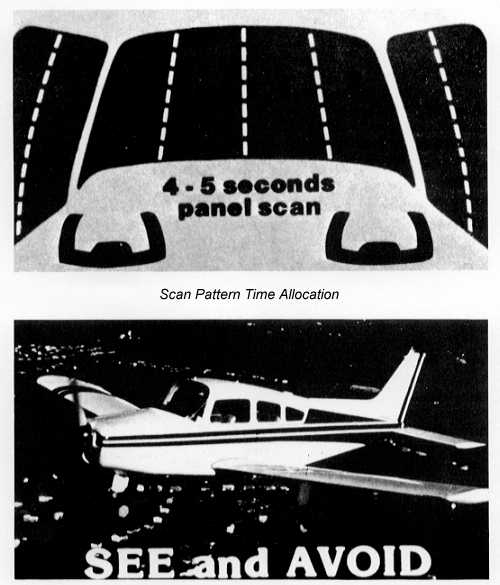Midair Collision Avoidance
YOUR ROLE IN COLLISION AVOIDANCE
Recent studies of midair collisions involving
aircraft by the National Transportation Safety Board (NTSB) determined that:
Most of the aircraft involved in collisions are
engaged in recreational flying, not on any type of flight plan.
ü Most midair collisions occur in VFR
weather conditions during weekend daylight hours.
ü The vast majority of accidents
occurred at or near uncontrolled airports and at altitudes below 1000 feet.
ü Pilots of all experience levels were
involved in midair collisions, from pilots on their first solo ride, to 20,000-hour veterans.
ü Flight instructors were on board the
aircraft 37 percent of the accidents in the study.
ü Most collisions occur in daylight
with visibility greater than 3 miles.
Here's how you can contribute to professional flying and reduce the odds
of becoming involved in a midair collision.

1.
Practice the "see and avoid" concept at all times regardless
of whether the operation is conducted under Instrument (IFR) or Visual (VFR)
Flight Rules.
2. Under
IFR control, don't always count on ATC to keep you away from other
aircraft. They're human, and can make
mistakes.
3.
Understand the limitations of your eyes and use proper visual scanning
techniques. Remember, if another
aircraft appears to have no relative motion, but is increasing in size, it is
likely to be on a collision course with you.
4.
Execute appropriate clearing procedures before all climbs, descents,
turns, training maneuvers, or aerobatics.
5. Be
aware of the type airspace in which you intend to operate in and comply with
the applicable rules.
6.
Adhere to the necessary communications requirements.
7. Traffic advisories should be requested and
used when available to assist the pilot’s own visual scanning -- advisories in
no way lessen the pilot’s obligation to see and avoid.
8. If not practical to initiate radio contact
for traffic information, at least monitor the appropriate frequency.
9. Make frequent position reports along your
route and AT UNCONTROLLED AIRPORTS BROADCAST YOUR POSITION AND INTENTIONS ON
COMMON TRAFFIC ADVISORY FREQUENCY (CTAF).
10. Make your aircraft as visible as possible -
turn on exterior lights below 10,000 MSL and landing lights when operating
within 10 miles of any airport, in conditions of reduced visibility, where any
bird activity is expected or under special VFR clearance.
11. If
the aircraft is equipped with a transponder, turn it on and adjust it to reply
on both Mode 3/A and Mode C (if installed).
Transponders substantially increase the capability of radar to see all
aircraft and the MODE C feature enables the controller to quickly determine
where potential traffic conflicts exist.
Even VFR pilots who are not in contact with ATC will be afforded greater
protection from IFR aircraft receiving traffic advisories.
IN ACCORDANCE WITH FAR PART 91.413, WHILE IN
CONTROLLED AIRSPACE, EACH PILOT OPERATING AN AIRCRAFT EQUIPPED WITH AN OPERABLE
ATC TRANSPONDER MAINTAINED SHALL OPERATE THE TRANSPONDER, INCLUDING MODE C IF
INSTALLED, ON THE APPROPRIATE MODE OR AS ASSIGNED BY ATC. IN CLASS G AIRSPACE, THE TRANSPONDER SHOULD
BE OPERATING WHILE AIRBORNE UNLESS OTHERWISE REQUESTED BY ATC.
12. ABOVE ALL, AVOID COMPLACENCY
Promoting
Aviation Safety is the key .
No comments:
Post a Comment